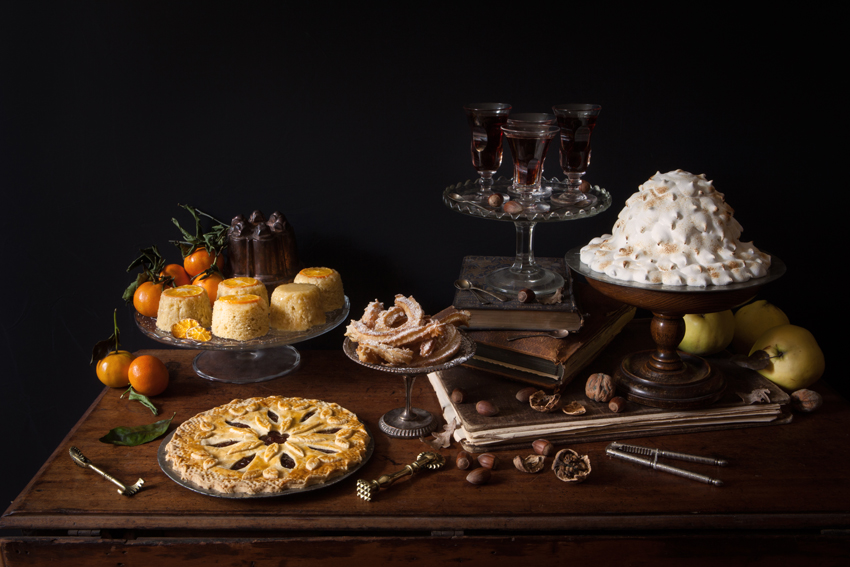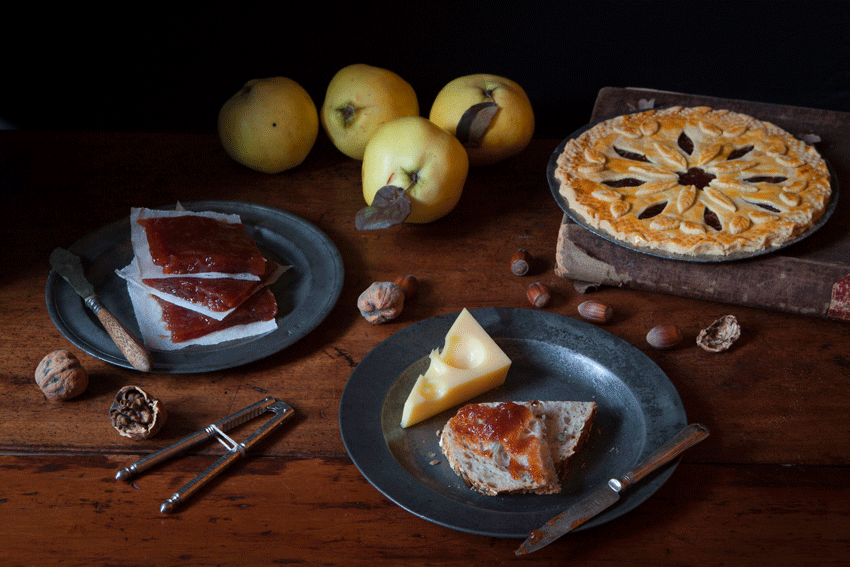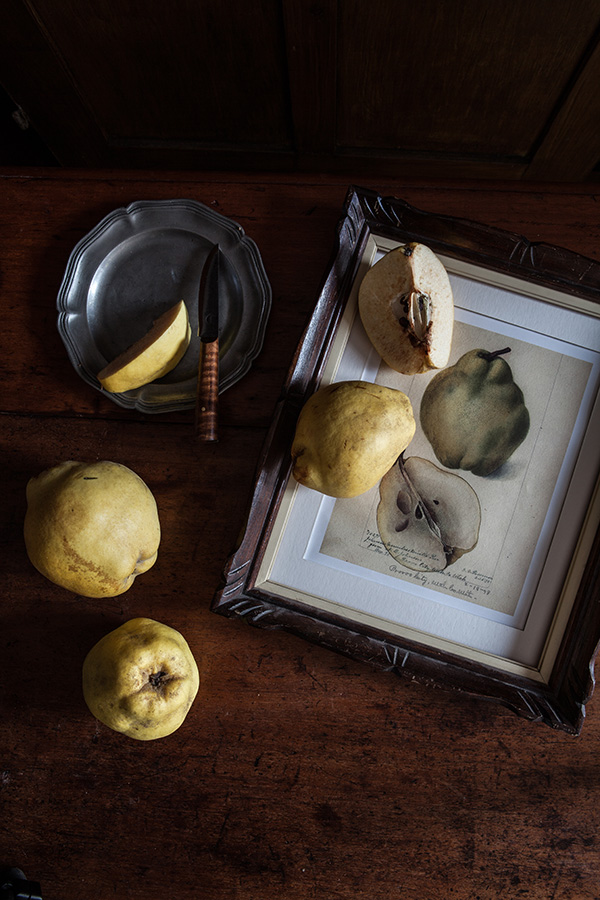Two weeks ago on a frosty yet sunny winter morning, we welcomed our workshop attendees at All Hallows Cookery School in Dorset. We started with tea and mini mince pies plus pancakes from the AGA for the early birds. It was hard to get started because we were all having so much fun getting to know each other, or catching up. We made the more delicate puddings from my book, a sweetmeat pudding – otherwise known as the Bakewell pudding, Snake fritters and a quince tart with intricate pastry work. Lunch was beef with prunes, lovingly prepared by our host and owner of the school Lisa Osman. I can’t think of a dish more fitting on a day of English cooking. After all, beef and pudding have been the icon of English food for many centuries. There was a time during the Napoleonic war when eating roast beef and plum pudding would have showed your patriotism. Visitors from all over Europe spoke with high regard about the quality of English meat and beef especially.
After our rather festive lunch in Lisa’s beautiful dining room which made me feel as if I was in a Jane Austen novel, she taught us wreath making which sounds far more easy than it actually was. We struggled and have a huge respect for wreath makers now. We all concluded we now understood why a impressive wreath is so pricy. It takes a ton of work, and will leave you with very painful hands. I finished mine at home and now have it on my front door for all to see….









